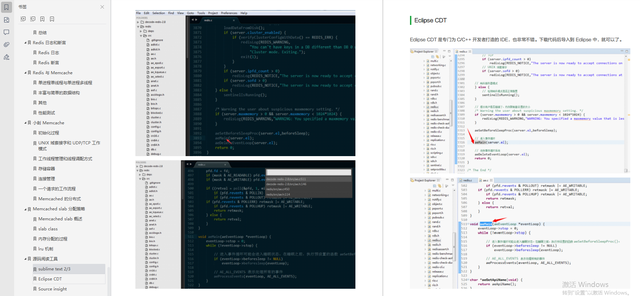} catch (Exception e) {
log.error("create connection pool error,errorMessage:{}", e);
}
}
/**
* 获取数据源
* @return 返回数据源
*/
public static DataSource getDataSource(){
return ds;
}
/**
* 获取连接对象
* @return 返回连接对象
* @throws SQLException 抛出的编译异常
*/
public static Connection getConn() throws SQLException {
return ds.getConnection();
}
/**
* 关闭连接
* @param stmt sql执行对象
* @param conn 数据库连接对象
*/
public static void close(Statement stmt, Connection conn){
if(stmt != null){
try {
stmt.close();
} catch (SQLException e) {
log.error("close error,errorMessage:{}", e);
}
}
if(conn != null){
try {
conn.close();
} catch (SQLException e) {
log.error("close error,errorMessage:{}", e);
}
}
}
/**
* 关闭资源的重载方法
* @param rs 处理结果集的对象
* @param stmt 执行sql语句的对象
* @param conn 连接数据库的对象
*/
public static void close(ResultSet rs, Statement stmt, Connection conn){
if(rs != null){
try {
rs.close();
} catch (SQLException e) {
log.error("close error,errorMessage:{}", e);
}
}
if(stmt != null){
try {
stmt.close();
} catch (SQLException e) {
log.error("close error,errorMessage:{}", e);
}
}
if(conn != null){
try {
conn.close();
} catch (SQLException e) {
log.error("close error,errorMessage:{}", e);
}
}
}
}
二、jdbcTemplate.queryForList源码初探
-------------------------------
public class JdbcTemplate extends JdbcAccessor implements JdbcOperations {
public JdbcTemplate(DataSource dataSource) {
setDataSource(dataSource);
afterPropertiesSet();
}
@Override
public List<Map<String, Object>> queryForList(String sql) throws DataAccessException {
return query(sql, getColumnMapRowMapper());
}
@Override
public <T> List<T> query(String sql, RowMapper<T> rowMapper) throws DataAccessException {
return result(query(sql, new RowMapperResultSetExtractor<>(rowMapper)));
}
@Override
@Nullable
public <T> T query(final String sql, final ResultSetExtractor<T> rse) throws DataAccessException {
Assert.notNull(sql, "SQL must not be null");
Assert.notNull(rse, "ResultSetExtractor must not be null");
if (logger.isDebugEnabled()) {
logger.debug("Executing SQL query [" + sql + "]");
}
/**
* Callback to execute the query.
*/
class QueryStatementCallback implements StatementCallback<T>, SqlProvider {
@Override
@Nullable
public T doInStatement(Statement stmt) throws SQLException {
ResultSet rs = null;
try {
rs = stmt.executeQuery(sql);
return rse.extractData(rs);
}
finally {
JdbcUtils.closeResultSet(rs);
}
}
@Override
public String getSql() {
return sql;
}
}
return execute(new QueryStatementCallback());
}
@Override
@Nullable
public <T> T execute(StatementCallback<T> action) throws DataAccessException {
Assert.notNull(action, "Callback object must not be null");
Connection con = DataSourceUtils.getConnection(obtainDataSource());
Statement stmt = null;
try {
stmt = con.createStatement();
applyStatementSettings(stmt);
T result = action.doInStatement(stmt);
handleWarnings(stmt);
return result;
}
catch (SQLException ex) {
// Release Connection early, to avoid potential connection pool deadlock
// in the case when the exception translator hasn't been initialized yet.
String sql = getSql(action);
JdbcUtils.closeStatement(stmt);
stmt = null;
DataSourceUtils.releaseConnection(con, getDataSource());
con = null;
throw translateException("StatementCallback", sql, ex);
}
finally {
JdbcUtils.closeStatement(stmt);
DataSourceUtils.releaseConnection(con, getDataSource());
}
}
...
}
public interface Statement extends Wrapper, AutoCloseable {
ResultSet executeQuery(String sql) throws SQLException;
...
}
public abstract class JdbcAccessor implements InitializingBean {
@Nullable
private DataSource dataSource;
public void setDataSource(@Nullable DataSource dataSource) {
this.dataSource = dataSource;
}
}
```
三、更优雅的方式 -> 通过配置类方式实现
---------------------
### 1、application.yml
```
server:
port: 8080
spring:
application:
name: test
datasource:
sqlserver:
jdbc-url: jdbc:sqlserver://127.0.0.1:1433;DatabaseName=test
driverClassName: com.microsoft.sqlserver.jdbc.SQLServerDriver
username: sa
password: sa
postgres:
jdbc-url: jdbc:postgresql://127.0.0.1:5432/test
driverClassName: org.postgresql.Driver
username: postgres
password: 123456
```
### 2、配置类
```
package com.guor.config;
import org.apache.ibatis.session.SqlSessionFactory;
import org.mybatis.spring.SqlSessionFactoryBean;
import org.mybatis.spring.SqlSessionTemplate;
import org.mybatis.spring.annotation.MapperScan;
import org.springframework.beans.factory.annotation.Qualifier;
import org.springframework.boot.context.properties.ConfigurationProperties;
import org.springframework.boot.jdbc.DataSourceBuilder;
import org.springframework.context.annotation.Bean;
import org.springframework.context.annotation.Configuration;
import org.springframework.core.io.support.PathMatchingResourcePatternResolver;
import org.springframework.jdbc.datasource.DataSourceTransactionManager;
import javax.sql.DataSource;
@Configuration
@MapperScan(basePackages = "com.guor.dao.postgres", sqlSessionTemplateRef = "postgresSqlSessionTemplate")
public class PostgresConfig {
@Bean(name = "postgresDataSource")
@ConfigurationProperties(prefix = "spring.datasource.postgres")
public DataSource postgresDataSource() {
return DataSourceBuilder.create().build();
}
@Bean(name = "postgresSqlSessionFactory")
public SqlSessionFactory postgresSqlSessionFactory(@Qualifier("postgresDataSource") DataSource dataSource) throws Exception {
SqlSessionFactoryBean bean = new SqlSessionFactoryBean();
bean.setDataSource(dataSource);
bean.setMapperLocations(new PathMatchingResourcePatternResolver().getResources("com/guor/dao/postgres/mapping/*.xml"));
return bean.getObject();
}
@Bean(name = "postgresTransactionManager")
public DataSourceTransactionManager postgresTransactionManager(@Qualifier("postgresDataSource") DataSource dataSource) {
return new DataSourceTransactionManager(dataSource);
}
@Bean(name = "postgresSqlSessionTemplate")
public SqlSessionTemplate postgresSqlSessionTemplate(@Qualifier("postgresSqlSessionFactory") SqlSessionFactory sqlSessionFactory) throws Exception {
return new SqlSessionTemplate(sqlSessionFactory);
}
}
package com.guor.config;
import org.apache.ibatis.session.SqlSessionFactory;
import org.mybatis.spring.SqlSessionFactoryBean;
import org.mybatis.spring.SqlSessionTemplate;
import org.mybatis.spring.annotation.MapperScan;
import org.springframework.beans.factory.annotation.Qualifier;
import org.springframework.boot.context.properties.ConfigurationProperties;
import org.springframework.boot.jdbc.DataSourceBuilder;
import org.springframework.context.annotation.Bean;
import org.springframework.context.annotation.Configuration;
import org.springframework.context.annotation.Primary;
import org.springframework.core.io.support.PathMatchingResourcePatternResolver;
import org.springframework.jdbc.datasource.DataSourceTransactionManager;
import javax.sql.DataSource;
@Configuration
@MapperScan(basePackages = “com.guor.dao.sqlserver”, sqlSessionTemplateRef = “sqlserverSqlSessionTemplate”)
public class SqlserverConfig {
@Bean(name = "sqlserverDataSource")
@ConfigurationProperties(prefix = "spring.datasource.sqlserver")
@Primary
public DataSource sqlserverDataSource() {
return DataSourceBuilder.create().build();
}
@Bean(name = "sqlserverSqlSessionFactory")
@Primary
public SqlSessionFactory sqlserverSqlSessionFactory(@Qualifier("sqlserverDataSource") DataSource dataSource) throws Exception {
SqlSessionFactoryBean bean = new SqlSessionFactoryBean();
bean.setDataSource(dataSource);
bean.setMapperLocations(new PathMatchingResourcePatternResolver().getResources("com/guor/dao/sqlserver/mapping/*.xml"));
完结
Redis基于内存,常用作于缓存的一种技术,并且Redis存储的方式是以key-value的形式。Redis是如今互联网技术架构中,使用最广泛的缓存,在工作中常常会使用到。Redis也是中高级后端工程师技术面试中,面试官最喜欢问的问题之一,因此作为Java开发者,Redis是我们必须要掌握的。
Redis 是 NoSQL 数据库领域的佼佼者,如果你需要了解 Redis 是如何实现高并发、海量数据存储的,那么这份腾讯专家手敲《Redis源码日志笔记》将会是你的最佳选择。

ataSource) throws Exception {
SqlSessionFactoryBean bean = new SqlSessionFactoryBean();
bean.setDataSource(dataSource);
bean.setMapperLocations(new PathMatchingResourcePatternResolver().getResources("com/guor/dao/sqlserver/mapping/*.xml"));
完结
Redis基于内存,常用作于缓存的一种技术,并且Redis存储的方式是以key-value的形式。Redis是如今互联网技术架构中,使用最广泛的缓存,在工作中常常会使用到。Redis也是中高级后端工程师技术面试中,面试官最喜欢问的问题之一,因此作为Java开发者,Redis是我们必须要掌握的。
Redis 是 NoSQL 数据库领域的佼佼者,如果你需要了解 Redis 是如何实现高并发、海量数据存储的,那么这份腾讯专家手敲《Redis源码日志笔记》将会是你的最佳选择。
[外链图片转存中…(img-KmFhwGZJ-1628388888574)]
感兴趣的朋友可以通过点赞+戳这里的方式免费获取腾讯专家手写Redis源码日志笔记pdf版本!





















 5万+
5万+











 被折叠的 条评论
为什么被折叠?
被折叠的 条评论
为什么被折叠?








